#aryan migration theory
Text
AIT or Aryan Invasion Theory (debunked): A superior "race" of white, horse-riding Aryans invaded the areas of the inferior and primitive Indus Valley population, which included the Dravidians (but actually no one said that the IVC was a pure, dark-skinned Dravidian civilization so idk where that idea came from), and civilized them.
AMT or Aryan Migration Theory: A group of usually horse and chariot-riding nomads and pastoralists usually called the Aryans migrated from the Indo-Iranian region to India and mingled PEACEFULLY with the population of the late Indus Valley population (who were already highly advanced, as we know), by which time the IVC was beginning to collapse, possibly due to change of climate and rain patterns (still not sure yet), and hence the people were abandoning these settlements spreading across the subcontinent. These Indo-Aryans on arriving mixed with this population and shared their genetics, art and culture with each other, which led to the introduction of Sanskrit and Vedic culture in India.
To any leftist who keep regurgitating the former busted myth, please stop. You look stupid. And to any rightist who keep using AMT as AIT to debunk it, they're not the same. These two theories have a sky-ground difference.
The previous one makes Aryans look evil. That they were some high-level royalty who invaded India. But, in fact, they were regular people, regular migrants, just how every migration used to happen 3000-4000 years ago. Like I said, most of them were nomadic settlers.
Sure, later on, the varna system came into existence and this was the beginning of a hierarchical structure in India for the first time (since during the IVC there wasn't any sort of social hierarchy according to current sources). But who's to say it was ONLY the Aryans? Remember. They're NOT a race. They're a particular group of people. And by the time the varna system was introduced already a hell lotta intermixing had happened. Hence it wasn't JUST the Aryans (history and especially anthropological and genetic history is not that black and white LMFAO), because it was a term for 'noble', not some kinda "righteous clan" or something. Idk why people keep thinking of it as a race lol. I thought that was already debunked with the AIT.
As for the indigeneity of the Aryans, technically no one is indigenous. Many of the adivasi and non-adivasi tribes came AFTER the Indus Valley Civilization. So the "who came first" logic doesn't really work at all. (There might've been many that came before as well, who knows. Point is, again, it's all a migration salad at the end of the day)
adjective
indigenous (adjective)
originating or occurring naturally in a particular place; native:
This is the Google definition of indigenous. If we take THIS into account, there would be SEVERAL groups of people involved, instead of just one, like the IVC people, a few of the oldest nomadic tribes, mixed Indo-Aryans, etc. But I'm not gonna call ANYONE indigenous, or not indigenous. Because guess what, none of the humans are really indigenous to any place apart from the African continent. Also the Aryan migration led to the rise of a LOT of genetic subgroups, which was a key factor in leading to the most confusing anthropological history of the Indian subcontinent. It has a fuck ton of genetic markers and groups and subgroups, it's wildly confusing and historians are still trying to figure out every kind of intermixing that has happened. So STOP fighting over who is indigenous or not LMAO. Because guess what, we can never truly assert the indigeneity of a migrant species such as humans. (Yes we do call Native Americans the indigenous people of Americas, or the aboriginals the indigenous people of Australia and the Australasian archipelago, but they were also migrants at some point of time. Now before anyone says I'm disregarding the indigeneity of these groups, I'm not. All I'm saying is that we shouldn't CARE who's indigenous and who's not, because unlike the case of Americas and the Australasian islands, Aryans didn't INVADE India. They were simply another set of migrants, JUST like the IVC people, who also came from the middle-eastern region, and JUST like the adivasi tribes, who migrated from mostly the African and Australasian regions, probably, not sure again.)
I'll link the genetic studies done below because they explain it all way better than I can (and these research papers may also correct some of the incorrect statements I might've unnoticeably or ignorantly made in my own paragraphs so yeah):
Hence, at the end of the day, idk why we're banging our heads on the walls over ONE SIMPLE MIGRATION, which was NOTHING DIFFERENT THAN ANY OTHER MIGRATION. Migrations happen ALL THE TIME. Get over it, BOTH the sides of the political wings, and live in harmony lmao. The Aryans and Dravidians AREN'T RACES. They were just certain groups of REGULAR ass people jeez.
History is a complex subject, and the more evidence we find, the more we would know about our past. I have literally nothing against any of the political wings, but I do want to keep the current theories (which are NOT synonymous to hypotheses btw) and facts straight. I'm once again not saying these facts will never change, because that's not how history works. Maybe in the future, we might find out something completely different about India's past. But remember, whenever we talk about our country's past, we should keep it unbiased, unopinionated, and definitely factual and objective, without including our own views (both political and personal) into it. Interpretations? Sure. But they should remain at ONLY interpretations at best, and only the solid evidences should be claimed as facts.
#hindublr#aryan migration theory#indo-aryans#history#indian history#indus valley#indus valley civilization#desiblr#desi tumblr#desiposting#bharat
9 notes
·
View notes
Text
Ignatius Donnelly, the dude who kicked off modern Atlantis theories as we know them, literally said "those brown people got their technology and culture from white people, actually" in his book Atlantis: The Antediluvian World:
I might pursue those parallels much farther; but it seems to me that these extraordinary coincidences must have arisen either from identity of origin or long-continued ancient intercourse. There can be little doubt that a fair-skinned, light-haired, bearded race, holding the religion which Plato says prevailed in Atlantis, carried an Atlantean civilization at an early day up the valley of the Amazon to the heights of Bolivia and Peru, precisely as a similar emigration of Aryans went westward to the shores of the Mediterranean and Caspian, and it is very likely that these diverse migrations habitually spoke the same language.
13 notes
·
View notes
Note
Is Aryan migration historical fact? Yk even Ambedkar didn’t believe in racial theory of caste 😐
Yes it is, near verified by historical, linguistic, anthropological and a genetic record.
Neither do I, subscribing to Aryan migration does not mean race as caste in any way unless you you believe that migrations of any form result in racial violence and domination. It doesn't even follow that that such violence manifests as the caste system and maps to racial violence. There isn't even a need to believe in the coherence of Aryans as a racial group to accept that their were migrations of Indo European peoples bringing horses into the subcontinent. Ambedkar's reservations on the acceptance of Aryan Migration were founded in a time where the hypothesis was called Aryan Invasion, and deployed often as a defense of Aryan and Brahmin superiority over indigenous others. The Hindu right now refutes Aryan Migration because they want sole claim to Indian history.
https://scroll.in/article/937043/why-hindutva-supporters-love-to-hate-the-discredited-aryan-invasion-theory
Dr. B. R. Ambedkar on the Aryan Invasion and the Emergence of the Caste System in India by Arvind Sharma at https://www.jstor.org/stable/4139922?seq=22
18 notes
·
View notes
Text



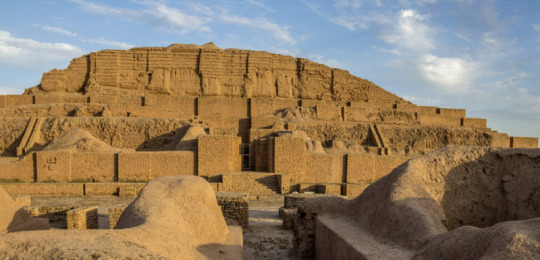
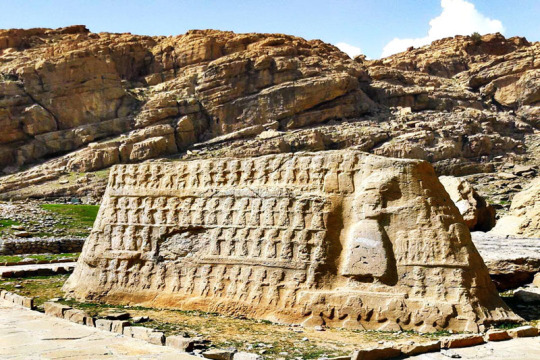
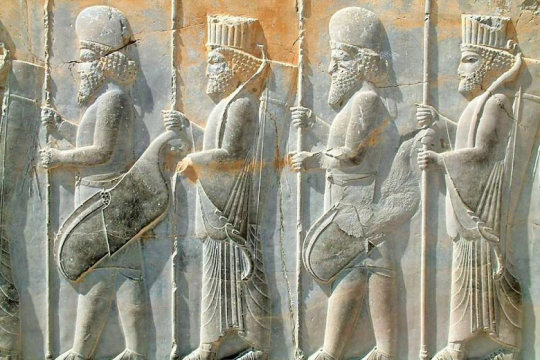



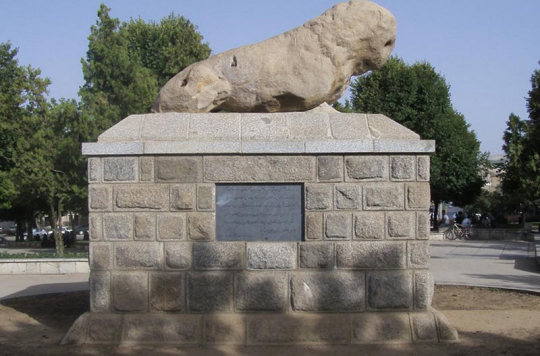
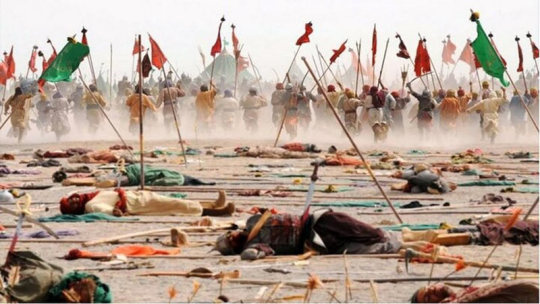
Who was the founder of the first central government in Iran?
The founder of the first central government in Iran dates back to the Achaemenid period by Cyrus the Great. Achaemenid Cyrus was crowned in 550 BC and established the first central government in Iran.
The origin of the name Iran
The country of Iran was not called "Iran" from the beginning and was known by the names of Persia, Pars and Pers among others. Saeed Nafisi suggested the word "Iran" instead of "Persia" in January 1313 AH. The naming initially caused opposition. Because the politicians considered "Persia" as an international name that was familiar among all types. The supporters of this naming also considered the term "Iran" as the best name to describe the political authority and cultural background of this country.
In 1314 AH, based on the circular of the Ministry of Foreign Affairs of Iran and the request of the then government of Reza Shah, the word "Iran" was officially used to name the country and replace other names. Professor Arthur Upham Pope, an American Iranologist, writes in the book Masterpieces of Iranian Art translated by Parviz Natal Khanleri:
The word "Iran" was used for the plateau and geographical functions of Iran in the first millennium BC.
According to Mohammad Moin, the great Iranian writer, the origin of the word "Arya" is so clear that the eastern part of Indo-Europe considers themselves proud of this name. Indo-Iranian common ancestors also introduced themselves with this name and named their country as "Iran-Oejah".
Pre-Islamic era in Iranian history
The pre-Islam era, which includes various events in the history of Iran, includes the time period before the arrival of the Aryans, that is, the rule of Elam until the end of the Sassanid rule and the arrival of the Arabs in Iran. According to historical sources, before the Aryans entered Iran, the Elamites lived as a native dynasty in the Iranian plateau.
The Elam dynasty was formed in the southwestern region of the Iranian plateau around 3,000 years BC, and they named their territory "Hatmati". The rule of Elam expanded during the period of the famous kings of this dynasty, and they dominated parts of Mesopotamia (Mesopotamia) in addition to southwestern Iran.
Whenever the Elamites gained more power, they played an important role in the Middle River politics. They overcame Sumer around 2,000 BC and completely subjugated the Mesopotamia. Historians divide the political history of Elam into three periods:
Ancient Elam, Middle Elam and New Elam
The migration of Aryans to the Iranian plateau
In the third period of the rule of Elam, the Medes, as a group of Aryans, established their power in the northwest of Iran and took control of that part of Iran. The Parthians (Ashkanians) and the Persians (Achaemenians and their successors, who were called the Sasanians) were two other Aryan tribes who formed a government in the Iranian plateau after the Medes.
There are many theories about the ethnicity, race and migration of Aryans and their entry into Iran, which are the source of disagreement among scholars and have not yet reached a single conclusion about them. Some consider Siberia as the origin of Aryans and believe that they entered the Iranian plateau from there.
The post-Islam era in Iranian history
Yazdgerd III, the last Sassanid king, was defeated by the Arabs and left Iran to them. "Rostam Farrokhzad" was defeated by the Arabs in the battle of Qadisiyah (636 AD) and lost his life despite his bravery. He organized his forces and was defeated by the Arabs in the war that took place in Nahavand (642 AD). Yazdgerd fled to the East with his family and was killed near Merv. With the death of Yazdgerd III, his empire fell in 651 AD.According to the book "Two Centuries of Silence" by "Abd al-Hossein Zarinkoub", some Iranians were not satisfied with the arrival of Arabs in the country and continued to adhere to the Zoroastrian religion. Zoroastrian Iranians paid tribute to music during this period. According to Zarinkoob, Iranians do not accept Islam with open arms and during this time, they were fighting with the Arabs in the corners and sides of Iran in order to advance them. On the other hand, Shahid Motahari criticized Zarinkoub in his book "Mutual Services of Islam and Iran" and did not consider his opinion to be scientific. He believes that Iranians accepted Islam with open arms.
The land of Iran gradually surrendered to the Arabs and only Tabaristan and Gilan maintained their independence by resisting. During this period, government powers did not rule in Iran and local governments have power in some parts of Iran.
The domination of Arabs over Iran caused their culture to be revealed in Iran, and with the beginning of independent Islamic governments in Iran, the Hijri lunar calendar, the foundations of historians in writing the history of Iran, was published.
contemporary history
World War II brought chaos to Iran and Reza Shah resigned from the throne. Mohammad Reza succeeded his father in 1320 AH (1941 AD). The creation of the 14th Parliament, the nationalization of the oil industry, the withdrawal of Soviet forces from Iran after the end of World War II, the August 28 coup, the Baghdad Pact, and the formation of the Iranian National Front were among the most important events of this period.
With the formation of the Islamic Revolution in 1357 AH (1978 CE), the life of Pahlavi rule ended and the Islamic Republic replaced it.
11 notes
·
View notes
Note
Do you think the Aryan Invasion Theory is true? I watching Mahabharata (star plus) and they kept using Aryavarta which reminded me of the Aryan race that Hilter used and so I did a little research and obviously he had no idea what he was talking about but what I found on the theory was a bit unsettling. I always believed that Hinduism/Sanskrit/Vedas originated in India (Indus Valley) but this theory seems to have genetic research to support it and it set off my whole belief system and gave me an identity crisis for some reason
Well, I am not really big on this theory because it has zilch proof to it as far as I have seen, only theories.
A simplified take on the same is the Indian Express article on Rakhigarhi excavation.
Other than that, there was this lengthy India Today article on the same excavation that gave me a headache because it won’t go to the fucking point, but I suppose it is in favour of the theory? I don’t know man, it’s fucking long and I did not read it all, just understood that IVC people from 4500 were native and that apparently we have outsider DNA.
There is no proof of any migration other than those based on change in genetic make up, a more plausible theory of which I explain later.
The interesting thing is, that the said Aryan invasion Theory first pinned us to be central asians from 1500BC and now we are Iranian farmers.
It completely ignores the fact that Indians have little genes in common with Europeans who we supposedly come from moreso with South Indians (and I mean much more, we have almost the same gene combination except a few), and seems as if the India today article, based on the same premise of “Aryans had this one gene (r1 to be more specific) common with Iranians that Indus people did not have” fails to realise that people from the northwest of Indian subcontinent can have common genes with the bordering land for other reasons aswell because no shit sherlock, people fuck💀
I mean, how else do you explain the much higher genetic connection to south indians?
Another factor they use for the theory is the simultaneous developement of modern day Hinduism and Zorastrianism, but that too can be chalked upto influence rather than migration, given that Hinduism is actually older by a little margin (oldest living religion) and for the theory to be true, the migration should have gone westward instead.
Heck, the influence thing can easily exclude the theory altogther, because Iran is close to what are now the areas of IVC, and them slowly influencing the culture during or after IVC when they became more civil, (in 4000BC) or us doing the same, or even intermixing of the two will make more sense than AIT.
The migration of these Aryans cannot be proven otherwise aswell because there lies no proof for same. Literally none. The archeologist in the India today article and few others uphold it yet are unable to prove it beyond circumstantial evidence that makes more sense when turned against the theory rather than its favour, like the Iranian thing I mentioned. It might also very well be a migration to eastwards in Hind from the western part, because the Vedas were written before the supposed “Vedic Aryan invaders” happened and they are clearly neither Monotheistic nor Tribal, and align more with the Indic religions, so I digress they came from Central Asia or Iran.
Plus, the Vedas were written by the "aryans" on banks of saraswati, and the saraswati dried up centuries before they "destroyed IVC and took over". Another interesting thing is that Saraswati flew through the IVC sooooo.... yeah, maybe it all can be summed up to people fucking🫠
The thing is, we are locals, this culture was very much developed here on this land. Vedas, Sanskrit, Sanatan, there is a reason you do not see traces of them elsewhere, and I am certain this theory is BS because of the little I have read, because it has nothing to prove for itself.
But other than that, this particular subject was never of my interest because of how lengthy it was, and I fucking sucked at history, so may I suggest asking others who do think of this topic as often. I only know @tiananmen-square-orgy to be my nerdy mutual on this topic, and if finnie cannot help you I'll try geting you connected to a friend who is not on tumblr yet can help becuase of his extensive knowledge.
20 notes
·
View notes
Text
*sighs a deep sigh*
Racism does not come from genetic or evolutionary science.
At this point I don't expect anyone to listen. I mean, partly because it's me, but also because the online Left has collectively decided that Genetics Is The Enemy.
"Scientific" racism predates Charles Darwin and Gregor Mendel; the theory as we know it, with its "Aryan master-race" and so on, came from a guy called Joseph Arthur de Gobineau, who made it up out of materials he derived from historical linguistics. That's right, from the Humanities. Not the Sciences at all, let alone genetics.
Modern genetic science was what finally buried the last shred of Gobineau's scientific credibility. We have genetics to thank for the insight that race is a social construct.
I mean, not exclusively genetics; some anthropologists had been saying it for decades before. But genetics was what clinched it.
Here in the Pacific, in the mid-20th century, there was a complicated tangle of theories about where Pacific Island people's ancestors had come from. On the one hand, archaeology and linguistics and oral history seemed to indicate a series of successive migrations from a Melanesian hub out to more and more distant island groups. On the other, race science said that the Polynesians and Micronesians, who were relatively light-skinned and "noble" looking, couldn't be closely related to the dark-skinned Melanesians; they must have come by another route from India or somewhere.
Even here in New Zealand, the Moriori people of the Chatham Islands were theorized to be the remnant of a Melanesian ethnic group who had lived in mainland Aotearoa before being exterminated by the later-arriving Polynesian Māori.
(This theory was spread to a generation of New Zealand schoolchildren after it had been debunked, but that's another story. In case you're wondering, the first people to live here were, beyond any shadow of scientific doubt, Māori.)
Then DNA testing came along, and confirmed the story told by archaeology and linguistics and oral history, leaving the racial theory of separate origins on the scrapheap. Here as elsewhere, you got a clear, coherent story from your analysis if you weighted all "racial" factors at 0.
The Nazis never heard of DNA. I'm sure they would have been eager to use it to prove their theories if they had, but they would have been, to put it mildly, disappointed, and they would have silenced their genetic researchers with extreme prejudice before they could tell the world the truth.
But none of that is going to matter. Genetics Is The Enemy, regardless of whether it has actually done anything bad.
#genetics#science#biology#race “science”#no this isn't a passive-aggressive attempt at reverse psychology#i've tried that too and it doesn't work#genetics is not the enemy#now watch this get 0 reblogs
3 notes
·
View notes
Note
Most people don’t realize the vast majority of Zionists in the US are evangelical Christians, not Jewish people. Zionism wouldn’t have a stranglehold on public policy without the political power/financial backing of right-wing Christians who are trying to bring on the end times.
zionist propaganda is trying to convince us that white europeans are native to middle east 😭😭😭😭 like "we are the direct descendants of the israelites from 2000 years ago, therefore we're native middle easterns, so we have a birthright to palestine. it is ours by blood" ....... how can you be sure???? isn't that as ridiculous and far-fetched as me - an italian - claiming that i undoubtedly descend from julius caesar and the ancient romans from classical antiquity??? how should i know that this claim is true??? people migrate and hybridize continuously throughout history, even in a matter of decades. i literally cannot reconstruct my origins further back than my great-grandparents, nor do i know where my oldest ancestors came from, let alone those from 2000 years ago. my ancestors might have been anything but italians or catholics for all i know. so how can you be sure that the contemporary jews are direct descendants to a historical population from 2000 years ago whose precise characteristics remain source of debate?? have you carried blood tests on every single self-identifying jew alive today? and even if you did, this obsession with blood purity and ancestry is kinda creepy and oddly reminiscent of nazis and their beloved aryans. assuming that a given bloodline has remained pristine and isolated after thousands of years of genetic admixture is kinda racist, anti-scientific and delusional. literally nothing in zionist theory and propaganda sounds even remotely plausible, unless you admit that you believe in all that biblical mumbo-jumbo at the root of christianity. including the pretty racist bit where god says that jews aren't allowed to marry people from other congregations. but the bible is a fantasy book and im an atheist so i literally don't know what to say to these people. they just sound like delusional schizophrenic nationalists to me.
#i know this isn't exactly the point you were trying to make anon#but this has been sitting heavy on my nogging#needed to get it out#ask#anon#anonymous#palestine
5 notes
·
View notes
Text
Reading List
to be updated constantly
Articles:
"Why Women Online Can’t Stop Reading Fairy Porn" by C.T. Jones for Rolling Stone
"They Called 911 for Help. Police and Prosecutors Used a New Junk Science to Decide They Were Liars." by Brett Murphy for ProPublica
"‘I Think My Husband Is Trashing My Novel on Goodreads!’" by Emily Gould for The Cut
"Woman in Retrograde" by Isabel Cristo for The Cut
"The unwanted Spanish soccer kiss is textbook male chauvinism. Don’t excuse it" by Moira Donegan for the Guardian
"I Started the Media Men List" by Moira Donegan for The Cut
"What Moira Donegan Did for Young Women Writers" by Jordana Rosenfeld for The Nation
"The Key Detail Missing From the Narrative About O.J. and Race" by Joel Anderson for Slate
"The Coiled Ferocity of Zendaya" by Matt Zoller Seitz for Vulture
"OJ Simpson died the comfortable death in old age that Nicole Brown should have had" by Moira Donegan for The Guardian
"Norm Macdonald Was the Hater O.J. Simpson Could Never Outrun" by Miles Klee for Rolling Stone
"Trans Stylists and Makeup Artists Are Reshaping Red Carpet Looks. Will They Get the Credit They’re Due?" by James Factora
"The ‘perfect Aryan’ child used in Nazi propaganda was actually Jewish" by Terrence McCoy for The Washington Post
"There Are Too Many Books; Or, Publishing Shouldn’t Be All About Quantity" by Maris Kreizman for Literary Hub
"An O.J. Juror on What The People v. O.J. Simpson Got Right and Wrong" by Ashley Reese for Vulture
"Super Cute Please Like" by Nicole Lipman for N + 1 Magazine
Essays:
Not That Bad: Dispatches from Rape Culture edited by Roxanne Gay
Creep: Accusations and Confessions by Myriam Gurba
"On Chappell Roan and Gen Z Pop" by Miranda Reinert
"In Memory of Nicole Brown Simpson" by Andrea Dworkin
"My Gender Is Dyke" by Alexandria Juarez for Autostraddle
"Columnists and Their Lives of Quiet Desperation" by Hamilton Nolan
Nonfiction:
Belabored: A Vindication of the Rights of Pregnant Women by Lyz Lenz
The Feminine Mystique by Betty Friedan
This American Ex-Wife: How I Ended My Marriage and Started My Life by Lyz Lenz
The Gentrification of the Mind: Witness to a Lost Imagination by Sarah Schulman
Savage Appetites: Four True Stories of Women, Crime, and Obsession by Rachel Monroe
The Sexual Politics of Meat: A Feminist-Vegetarian Critical Theory by Carol J. Adams
Eros the Bittersweet by Anne Carson
Who Owns This Sentence? A History of Copyrights and Wrongs by David Bellos & Alexandre Montagu
The Once and Future Sex: Going Medieval on Women's Roles in Society by Eleanor Janega
Moby Dyke: An Obsessive Quest to Track Down the Last Remaining Lesbian Bars in America by Krista Burton
University of Nike: How Corporate Cash Bought American Higher Education by Joshua Hunt
What it Feels Like for a Girl by Paris Lees
Female Masculinity by J. Jack Halberstam
The Theory of Everything Else: A Voyage Into the World of the Weird by Dan Schreiber
Stiff: The Curious Lives of Human Cadavers by Mary Roach
Better Living Through Birding: Notes from a Black Man in the Natural World by Christian Cooper
Rivermouth: A Chronicle of Language, Faith, and Migration by Alejandra Oliva
Unlikeable Female Characters: The Women Pop Culture Wants You to Hate by Anna Bogutskaya
Born a Crime: Stories From a South African Childhood by Trevor Noah
Caste: The Origins of Our Discontents by Isabel Wilkerson
The Lady from the Black Lagoon: Hollywood Monsters and the Lost Legacy of Milicent Patrick by Mallory O'Meara
Being Mortal: Medicine and What Matters in the End by Atul Gawande
Stone Butch Blues by Leslie Feinberg
Eyeliner: A Cultural History by Zahra Hankir
Against Technoableism: Rethinking Who Needs Improvement by Ashley Shew
The Wager: A Tale of Shipwreck, Mutiny and Murder by David Grann
Know My Name by Chanel Miller
Empire of Pain: The Secret History of the Sackler Dynasty by Patrick Radden Keefe
Novelist as a Vocation by Haruki Murakami
Rape-Revenge Films: A Critical Study by Alexandra Heller-Nicholas
Fiction:
To the Lighthouse by Virginia Woolf
Middlemarch by George Eliot
Just as You Are by Camille Kellogg
Just Happy to Be Here by Naomi Kanakia
The Misadventures of an Amateur Naturalist by Ceinwen Langley
Family Meal by Bryan Washington
Jurassic Park by Michael Crichton
The Mountain in the Sea by Ray Nayler
Ring Shout by P. Djèlí Clark
My Heart Is a Chainsaw by Stephen Graham Jones
An Island Princess Starts a Scandal by Adriana Herrera
Blackouts by Justin Torres
We Do What We Do in the Dark by Michelle Hart
Never Let Me Go by Kazuo Ishiguro
Less Is Lost by Andrew Sean Greer
The Faithless by C.L. Clark
Project Hail Mary by Andy Weir
The Poppy War by R.F. Kuang
The Disenchantments by Nina LaCour
Everything Leads to You by Nina LaCour
Bliss Montage by Ling Ma
Pachinko by Min Jin Lee
The Institute by Stephen King
Jonathan Strange & Mr Norrell by Susanna Clarke
Frankenstein: Junji Ito Story Collection by Junji Ito
Her Body and Other Parties: Stories by Carmen Maria Machado
Young Mungo by Douglas Stuart
The Dark Forest by Liu Cixin
Snuff by Terry Pratchett
Travelers Along the Way: A Robin Hood Remix by Aminah Mae Safi
Only a Monster by Vanessa Len
3 notes
·
View notes
Note
why do you not trust devdutt pattanaik anymore? genuine question because I haven't heard anything bad yet
i think what he has to say about the aryan migration/invasion theory is too naïve and generally ignores the saraswati question; a few references and explanations in his pop mythology do not reconcile with historical research that has been in the public domain for years; he seems to want to use mythology to arrive at personal values to live by, which by itself is okay, but in how he deals with ideas of sin or karma or dharma, he treats actions and decision as entirely personal and devoid of the network of caste, purity and pollution, and hierarchy that punctuated them; also on his social media he’s used casteist slurs which isn’t technically about his work, but is definitely a factor. check this.
26 notes
·
View notes
Text
APPSC Group 2 Notes, vedic age, QUICK REVISION
Aryan Migration and Vedic Literature , Vedic age NOTES
The Aryans are believed to have migrated from outside regions, with theories suggesting Central Asia, Europe, or the Arctic region as their homeland.
The Boghazkai inscription in Asia Minor, Turkey, supports the Central Asian theory.
The Aryans initially settled in the present-day Frontier Province and Punjab, known as Sapta Sindhu.
Vedic…
View On WordPress
0 notes
Note
Do you believe in the aryan invasion theory?
you mean the historical consensus of everyone outside of a small group of politically driven “historians” known as the indo-aryan migration, right? yes.
for what it’s worth, to keep this light, I have never shown another Hindu a picture of the “Pashupati” seal and had them recognize it as Hindu or even remotely related—-not even Indian—- if I didn’t tell them where it was from first.
1 note
·
View note
Text
THE OLDEST KNOWN MEN OF PLANET EARTH, TILL TODAY....THE INDIANS. PERIOD.
The Yamnaya invaders 5000 yrs back, that 90% of Europe has decended from, have now, via latest genetic data analysis, been drawn up, in color & texture & form, to look most accurately like they looked then!
Most would agree, they look North Indian or Indo-Persian ie Indian.
P.S. : Persians & Indians infact genetically & socially & culturally being a common people, since ~ 65,000 BCE (when they together arrived in India from Africa, the first known site of civilization) to ~ 8,000 BCE, when the 'Battle of the Ten Kings", happened, in North India, wherein many "Parshv" Indians are known to have run away & migrated westwards from India, into the regions now called Persia & around..from where the subsequent invasions into Europe then happened.
Pt being - The truth is actually THE OPPOSITE, of the Aryan Invasion (Ie the fallacious propaganda of India discovered & civilized only following its invasion by the Aryans, ~2,500 yrs back) Theory !
P.S.: Another part of history textbooks, debunked by renowned independent historians being, the supposed difference btwn this Aryan & Dravidian race, which is NONSENSE!
THERE WAS NEVER ANY SEPARATE DRAVIDIAN RACE, ONLY THE COMMON INDIAN RACE, ORIGINATING IN AFRICA IN 75,000 BCE, & COMMONLY MIGRATING TO INDIA & SETTLING THEREON 10,000 YRS LATER! (There are no historical, archaeological or genetic findings to date, to even remotely assist this theory). (And the few differences being mainly superficial, arising outta the diferently used languages in the 2 regions, Sanskrit in Northen regions since ~ 8,000 BCE, & Tamil & Telugu found to 've been used in the Southern part of India from around similar time periods).
https://www.youtube.com/watch?v=ZpCXiNL8F98
1 note
·
View note
Text
Close encounters of the racist kind
January 02, 2018
The modern far right is crisscrossed with pseudo-scientific research into lost Aryan super-civilizations, biblical giants, ancient astronauts and the occasional inter-dimensional alien.
On December 6, 1830, Andrew Jackson used his second State of the Union address to defend the Indian Removal Act, the administration’s sole legislative victory. He described the law promulgating the expulsion and resettlement of southeastern Native American tribes as the “happy consummation” of U.S. Indian policy. To his critics who “wept over the fate of the aborigines” — and who, it turned out, accurately predicted the horrors of the forced migrations known collectively to history as the Trail of Tears — Jackson offered an archeology lesson. Any “melancholy reflections” were ahistorical, he said, because the Indians were neither innocent victims nor first peoples, but perpetrators of what Jackson’s modern admirers might call “white genocide.”
Jackson knew this because the evidence was everywhere in plain sight.
“In the monuments and fortifications of an unknown people, we behold the memorials of a once-powerful race,” said Jackson, “exterminated to make room for the existing savage tribes.”
This reference to a “once-powerful race” was not lost on the American public of 1830. Every schoolboy and girl knew it to be the Lost Race of the Mound Builders, believed to be the continent’s original Caucasian inhabitants. From the colonial era into the twentieth century, it was widely accepted that certain earthen structures and burial grounds proved the existence of “white” or Indo-European peoples who settled North America only to be wiped out by the arrival of Jackson’s “savage (Asiatic) tribes.”
As the country expanded west, the “Moundbuilders” myth had obvious utility: If the Indians destroyed earlier waves of (white) settlers, their own extermination was just another turn of history’s wheel.
In the early 1890s, the U.S. ethnologist Cyrus Vance discredited the theory in a series published by the Smithsonian Institution. But the idea of a pre-Colombian “white genocide” never disappeared. It survived in subcultures, influenced by the occult and Atlantis legends, which clung to theories of lost ancient super-civilizations that, curiously, always seemed to be racially “white.”
In recent decades, as evidence of a richer paleoamerican record than previously realized has come to light, Jackson’s “once-powerful race” has found a new generation of boosters on the far right, where fantasies of “white genocide” distantly past and currently unfolding are an animating obsession.
In the fractured and constantly cross-fertilizing galaxy of extremist conspiracy culture, the white Moundbuilders — now known on the far right as “the Solutreans” — share a stage with other characters from an ancient and racially glorious but “suppressed” past: ancient Nordic-looking astronauts, biblical Aryan giants, Nazi scientists under the South Pole, and the occasional inter-dimensional alien in league with the Jews.
Alt-History Goes Prime Time
Over the last decade, the History Channel has exploited and fueled the popularization of alternative archeology, or alt-history. Numerous programs on the network showcase ideas that, while not explicitly racist or anti-Semitic, have origins in colonial projects and have been championed (for a reason) by modern extremists.
Take “America Unearthed,” which aired between 2012 and 2015 on H2, a defunct History Channel network. That show’s host, a geologist named Scott Wolter, promoted theories that ancient Celts and Scots settled North America and hybridized Native Americans centuries before Columbus. The details can be found in Wolter’s contributions to Lost Worlds of Ancient America, a 2012 anthology edited by Frank Joseph, born Frank Collin, founder of the National Socialist Party of America. (In 1993, following his expulsion from the party for “impure blood”, Collin became editor of Ancient American magazine and has authored dozens of books dealing with ancient “suppressed” history.) In another episode, when a guest professes admiration for the Knights of the Golden Circle, a group of wealthy Southerners who sought to create a hemispheric slave empire, Wolter just nods. (Wolter has denied that he or his ideas are racist, and claims to be politically liberal.)
Whatever the personal politics of the host, these shows serve as vectors for racist ideas and scholarship, argues the independent scholar Jason Colavito, who has been tracking this cultural crossover and amplification of fringe history for years. In books like Foundations of Atlantis, Ancient Astronauts, and Other Alternative Pasts, Colavito explores and debunks many of the ideas promoted on the History Channel and far right websites alike.
“These shows serve as entry points for discredited nineteenth-century ideas and point viewers toward the sources of extremist pseudo-scholarship and politics,” says Colavito. “The idea that aliens built the pyramids isn’t so funny when it draws young people to websites that quickly switch out aliens for Jews and start talking about gas chambers.”
Shows like “America Unearthed” are heavily discussed on white nationalist alt-history forums, as well as general far right political sites like Stormfront. They are routinely praised for introducing viewers to variations on the Solutrean Hypothesis (see below) and raising the profile of racist pseudo-scholarship.
Consider the H2 series “In Search of Aliens,” which, before its demise, promoted the work of Jan Udo Holey, a German writer whose antisemitic books have been banned across Europe. (Holey’s pen name, Jan Van Helsig, is a blunt Dracula reference, i.e. Jews are bloodsuckers.) The History Channel’s long-running series “Ancient Aliens,” meanwhile, features David Childress, whose books cite and build on the work of James Churchward, who promoted an ancient empire called the “lost continent of Mu,” whose “dominant race” was an “exceedingly handsome people, with clear white or olive skin.”
While the appeal of these theories has roots in Jacksonian justification for Manifest Destiny, their current manifestations are closely intertwined with the venomous persecution complexes that motivate the modern far right .
“Pseudo-histories feed the self-importance and aggrievement of neo-Nazis and alt-right folk,” says Benjamin Radford, a fellow with the Committee for Skeptical Inquiry who has written widely on pseudo-history and claims of paranormal activity. “They feel their rightful place in the world has been denied them — by ‘Big Archeology', by Jews, by an oppressive government.”
There is another source of the far right’s far-out ideas about ancient history, one that requires no psychologizing.
The Nazi Connection
The basic tenets of alt-archeology and alt-history were foundational to the ideology and program of National Socialism, but the Nazis did not invent them. The Nazi belief in a pure Aryan race with a glorious ancient past and distinct genetic history was central to a transatlantic nineteenth-century occult scene (that featured a heavy German influence.) After Hitler assumed power, this belief was institutionalized in the form of the Ancestral Heritage and Teaching Society, or the Ahnenerbe, an alt-archeology research outfit founded by Heinrich Himmler and the Atlantis theorist Herman Wirth.
Under the banner of the Ahnerbe, Nazi explorers fanned out across Europe and the globe in search of relics holding (possibly supernatural) hints of ancient Aryan glory. In 1938, a team was dispatched to Iceland in search of the lost Aryan civilization of Thule, which Nazi leaders discovered in an Icelandic epic poem. Among the Nazis’ interests in Thule was the legend of a race of ancient Aryan giants. (Versions of this myth remain common among biblically focused alt-historians like Steve Quayle and L.A. Marzulli.)
Belief in these legends was possible because of the Nazis’ sharp rejection of the Enlightenment. Dismissing the science of racial diversification and the archeological record, they reveled in symbology, myths and legends of “pure” ancient kingdoms that conquered the world under its symbol, the swastika. (This, the Nazis believed, explained the symbol’s presence in both Native American and Indian art.)
The Solutreans and the Original “White Genocide”
In the U.S., the average member of the far right is likely more familiar with the modern version of Jackson’s Race of the Moundbuilders, known as the Solutreans.
The name is taken from a hypothesis first promoted in the 1930s by the American archeologist Frank Hibben, who discovered arrowheads in North America that pre-dated the earliest Native American culture known at the time, the Clovis. The arrowheads, argued Hibben, resembled those of the Solutreans, a Stone Age people who inhabited southwestern Europe. Most of the field quickly dismissed the similarity as meaningless, but Hibben found adherents among those yearning for a new and more scientifically respectable version of Jackson’s “once-powerful race.” For them, the arrowheads (and other contested findings) prove that “European” Solutreans migrated to America across the northern ice-shelf millennia before “the Mongoloids” (as Solutrean adherents are apt to describe Native Americans.)
There is a second punchline to white nationalists continuing to hold up the Solutreans as victims of a prehistoric white persecution drama: Most scholars believe the Solutreans preceded racial diversification, and their arrowheads are artifacts of a dark-skinned people not long out of North Africa.
Atlantis, Aliens & Ancient Astronauts
In 1882, a decade before the Smithsonian debunked the Race of the Moundbuilders, a Minnesota Congressman and writer named Ignatius Loyola Donnelly published Atlantis: The Antediluvian World. The book provided another and more elaborate theory of an Aryan-looking super civilization that diffused technology to the rest of the world. Donnell’s book, based on mentions of Atlantis by Plato, cut the template for the sci-fi-tinged lost white civilization theories now experiencing a revival on cable television and beyond.
But just as Atlantis theory gained traction following the debunking of the Moundbuilders, so have theories of ancient Aryan astronauts superseded Atlantis with the mapping of the oceans and their floors.
“When there was nowhere left to explore, a group of thinkers started to project these ideas into the sky,” says Colavito, the historian. “Today, ancient astronauts are one of the more elaborate theories in pseudo-history with a racist component.”
In the 1960s and 70s, Erich von Daniken and Zecharia Sitchin put a twist on myths about Aryan visitors from a lost civilization predating the last Ice Age. These visitors to Mesoamerica didn’t come from Atlantis but from the sky. Bestsellers like von Daniken’s Chariots of the Gods (seven million sold and counting) popularized the idea that Aryan-looking aliens brought science and technology to primitive peoples around the world. In recent years, Graham Hancock has repackaged Ancient Astronaut Theory for a new generation in his bestselling Fingerprints of the Gods, and through steady work as a History Channel talking head.
Today’s far right is divided on Ancient Astronaut theory. On the one hand, it denies agency to brown-skinned peoples, and features Aryan-looking heroes, which they consider good things; but it also deprives ancient (human) Aryans of the accomplishments credited to them so lavishly in Atlantis and other theories.
Consider the case of Patrick Chouinard, a prolific writer who operates the alt-history sites RenegadeTribune.com and ancientaryans.com. (The latter site’s symbol, the Norse rune, was also the logo of the Nazi Ahnenerbe.) Like the Nazis, the sites are dedicated to recapturing a lost, pure Aryan civilization — one respectful of, but not dependent on alien life. In September, Chouinard cast a critical eye on the upcoming tenth season of the History Channel’s Ancient Aliens, in an article titled “Are Ancient Aliens Theorists Selling Our People Short?”
Chouinard believes they are. He cites an old episode of the H2’s In Search of Aliens in which the hosts, Giorgio Tsoukalos and David Childress (see above), explore the alleged mystery of some “elongated skulls” discovered in Peru. Chouinard scoffs at the hosts’ conclusion that the skulls belonged to aliens. Rather, he argued, reconstructions “show a very Nordic facial structure with [a] huge cranium.” This could be proof, furthermore, of “a separate branch of the White race the went along its own evolutionary path over 5,000 years ago.”
And who, you might wonder, does Chouinard believe is behind the Ancient Alien Theory that is “selling his people short”?
“The Jews,” writes Chouinard, “are using … the ancient alien camp to confound our race to the point that we deny our own accomplishments. The White race did not need ancient aliens to build our ancient civilizations, or to found other civilizations in remote corners of the Earth. Our race is capable of so much more.”
In 2018, it is dangerous in alt-ancient history circles to completely discount Ancient Aliens. Chouinard knows this. Rather than risk alienating his readers, he concedes, “It is very possible that visitations from extraterrestrials did happen in ancient times, [but] I will not conclude that the majority of our accomplishments as a race can be attributed to extraterrestrials.”
UFOs & “Refracted” Anti-Semitism
Massive and hopelessly intricate cover-ups. Nefarious alien races with gnomish physical features. Tales of secret Nazi super-technologies. It was always inevitable that the UFO and far right scenes would end up in bed together. UFO culture cast a shadow over everything in the postwar years, and as noted above, the far right has never been a stranger to the supernatural.
In Culture of Conspiracy, the historian Michael Barkun locates the early 1990s as the decade this convergence accelerated. Books like William Cooper’s Behold a Pale Horse and journals published by Gyeorgos Ceres Hatonn described UFO conspiracies that fit snugly into the New World Order conspiracy template, heavily influencing that decade’s militia movement. (Oklahoma City bomber Timothy McVeigh was reportedly a fan of Cooper’s radio show.)
But the seeds of this union are much deeper in the postwar record. One of the most important early UFO writers in the early 1950s, William Dudley Pelly, was an American occultist and fascist; his most important disciple, George Hunt Williamson, produced Byzantine UFO theories that incorporated anti-Semitic themes. Williamson’s 1958 book, UFOs Confidential, claimed every government on earth was under the control of a handful of (mostly Jewish) “international bankers,” which for some reason the author believed included U.S. Supreme Court Justice Felix Frankfurter.
Pelley and Williamson’s successors are not always or even often so blatantly anti-Semitic. But the fingerprints of anti-Semites are visible in the works of influential modern UFO writers like Jim Marrs and Jim Keith. These fingerprints appear in what Barkun calls “refracted racism and anti-Semitism,” in which old tropes are repackaged as an episode of the X-Files. This repackaging often includes not very subtle distinctions between “benevolent” aliens (tall, Aryan-looking) and “malevolent” aliens (short, grotesque, often in league with “international bankers”).
More than anyone else, the British conspiracist David Icke has popularized the Alien version of New World Order conspiracy. The former sportscaster’s elaborate theory is the Sgt. Peppers album-cover of the genre, featuring the Masons, the Vatican, the Illuminati, the House of Windsor — everyone is there. At the center of the theory is an alien race of lizard people from the fifth-dimension. Though Icke has always denied trafficking in anti-Semitism, he has endorsed the Protocols of the Elders of Zion — the famous forgery and foundational text of modern anti-Semitism — choosing to call it “The Illuminati Protocols.”
This is Barkun’s “refraction,” in action, and Icke’s shadow is long indeed, visible across the far right media spectrum.
Hollow Earth, Secret Nazi Labs & the South Pole
Another inevitable development in postwar conspiracy subculture was the rise of a belief in secret Nazi bases underneath Antarctica. The idea of a “hollow” or “inner” earth was a key tenet of nineteenth-century occultism, and in the postwar years it reemerged as a setting for escaped Nazi scientists working in secret technology and weapons labs.
The legend took root during the mid-1970s, nurtured by the Canadian neo-Nazi Ernst Zundel, who argued that Nazis invented flying saucers and had taken their breakthrough technology to bases deep under the South Pole.
The Third Reich was interested in a possible base at the South Pole, and a few high-level Nazis did escape to Argentina, whose national territory includes a slice of Antarctica extending to the South Pole. Zundel and his successors have infused these facts with Victorian inner-earth legends, and then marinated them over multiple viewings of the 1968 B-flick, They Saved Hitler’s Brain. Versions of the theory remain popular on neo-Nazi alt-history sites, and in recent years British tabloids like the Mirror and Daily Star have found click-bait gold in spreading them.
The story’s persistence led Colin Summerhayes of Cambridge University’s Polar Research Institute to look into the matter. In a 2006 edition of The Polar Record, Summerhayes presented his heavily footnoted and researched conclusion that secret Nazi bases do not exist, and have never existed, on or below Antarctica.
As exhaustive as it was, it is unlikely Summerhayes’ study had much impact among the theory’s adherents. It was, after all, competing with an ever expanding glut of “hidden history” books, podcasts and websites. One of many such titles to appear that year was SS Brotherhood of the Bell: The Nazi's Incredible Secret Technology, penned by Joseph P. Farrell, a prolific alt-historian and regular on Red Ice Radio.


Atlantis featured in Good Omens, episode 4, Saturday Fun Time, 2019

Atlantis, the home of Aquaman, 2018 and 2023

Disney doesn't get a pass. This was a story written by Joss Whedon, in 2001, forgettable sequel in 2003. At least it's been 20 years, though. The above projects can't say the same. Making fiction, world building are all fun and exciting things to do in the world of animation and comic books. It shouldn't be discouraged. But people should be aware of where certain ideas originate. I recall hearing some people thought Atlantis existed but had no idea the idea was still being pushed, nor that it was based off past white supremacy and it's efforts to explain away any other civilization being advanced, save it's own.
1 note
·
View note
Note
On the topic of ancients, who do you think represented the Indus Valley Civilization? Indians, for nationalist(patriotic?) reasons tend to argue that modern India is an extension of IVC. Others, and including some Pakistanis, tend to see IVC as a totally different civilization. Since you’ve got a pretty good depth of characterization for India, I was wondering if you had an opinion on this? :-)
Man oh man this is a... controversial conversation sweats loudly I hope the hindu nationalists dont get my ass....
My take, from the perspective of personifying nations, is that the Indus Valley Civilization (prbly more accurately called the Harappan Civilization considering that most of its sites arent even around the Indus) is a “different” nation-tan from India, as far as we know about it. I use quotes around different in that the word different is an ever changing definition, as well as what what metrics what we’re using to define.
Here’s the thing about the Indus Valley Civilization- we don’t know a lot about it. Since we cant decipher the Indus script, we have no idea how the administration or how centralized the IVC was- cuz they do have a system of standardized weights and measures across multiple settlements in the area, and that would require some communication/connection to achieve, but for all we know, IVC could be a decentralized collection collection of city states, leading to not even just one IVC personification running around at the time.
I do think there is most certainly a connection between India, the modern day personification we know and love (?), and IVC, as I headcanon that India more closely tied to the northwest at his core. India today (and the India of, for example 300s CE) is significantly different from IVC. For example, the Aryan Migrations had an enormous effect on what would become India’s culture, religion, and people, and I think that would be an important boundary between IVC and what many ppl think of as “India.”
(I know that the Aryan Migration Theory is very controversial but there is significant genetic, linguistic, and archaeological evidence to support the idea that some ppl moved in, mingled with prior populations, and created a new unique culture (like how most cultures arise), not whatever colonialist bullshit English ppl used to prove “India has always been dominated by (conveniently paler) foreigners” back in the 1800s)
I personally headcanon that India popped up around the late IVC age (tho exactly when is hard to say) when whatever IVC personification(s) was already on the decline. He remembered her (them?) as a human woman who raised him in his murky early beginnings, until archaeological findings resurfaced some long gone memories.
#hws india#hws indus river valley civilization#ask#Anonymous#historical hetalia#hetalia headcanons#wow this took a hot second to answer#but thanks!! if im wrong anywhere pls correct me#NOT COMFORTABLE SPEAKING ON WHAT EXACTLY HAPPENS NEXT WTHE ARYAN MIGRATION#AND VEDIC AGE SO WE SHALL STOP THERE FOR NOW
56 notes
·
View notes
Text
800+ Best & Unique Slavic Names
This list is a compilation of the best and most unique Slavic names available.
It includes girl’s and boys names that are both traditional and modern. This list of Slavic names is perfect for parents who are looking for a name that has meaning but is not too unusual or difficult to pronounce.
Slavic names are often used in Eastern Europe, the Balkans and Central Asia.
A Slavic name is a name from any of the Slavic languages. The term "Slavic" in this context refers to the group of languages and not to any specific country or ethnic group.
Slavic Names
The Slavic people are a diverse group of people who have many different cultures and languages. This diversity is reflected in the names that they use.
Slavic names come from the Slavic languages, which are spoken by Eastern and Central European countries. The most common language is Russian, which is spoken by around 160 million people in Russia and other countries like Belarus, Ukraine, Kazakhstan, and Azerbaijan.
The Slavic name system has three main parts: first name (Ivan), patronymic (Ivanovich), and last name (Petrov). These three parts usually correspond to the first letter of each word. For example Ivan Pavlov - I-P-P-L-A-V or Ivan Petrov - I-P-E-T-R-.
Slavic Names Girl
The Slavic Names Girl is a blog by an American girl who has a Slavic name. She shares her thoughts on the culture that she grew up in and how she came to be. The blog is written in English, but also contains translations of some of the older posts for those who are interested. The author of this blog, Slavic Names Girl, was born and raised in America with a Russian father and Polish mother. She shares her thoughts on how she came to be through telling stories from her childhood and adult life, as well as sharing insights into what it means to have a Slavic name.
Zorya
Chessie
Helenka
Myrene
Jereni
Zlata
Wandie
Veradis
Miri
Kalina
Karlinka
Zorrah
Toskia
Mateja
Wandy
Olya
Karolynne
Ludmila
Veera
Slavic Names Male
The Slavic culture is one of the most ancient in the world. Its inhabitants are called Slavs. The name of this cultural group comes from the word "Slava" which means "fame". It is believed that Slavs are direct descendants of Aryans who migrated from Central Asia to Europe in the 6th century BC.
The Slavic people have a rich history and culture, which is reflected in their language, customs, and beliefs. The Slavic people speak various languages that share common roots and a common alphabet.
Florian
Radimir
Stana
Mirko
Branko
Stesha
Wenczeslaw
Vlad
Miroslaw
Andrik
Svatosla
Vyachaslav
Jaroslav
Wladimir
Teun
Damir
Lazlo
Bohdan
Casimeer
Old Slavic Names
Old Slavic Names are a combination of Christian names and pagan names. The Christian name is usually the first name, and the pagan name is the second. The combination of the two can be seen in many names in Russia and other countries that used to be part of the Soviet Union.
Slavic Names Generator
Slavic Names Generator is a tool that helps you generate names for your characters.
If you are writing a story with Slavic characters, this tool is perfect for you. It has over 300,000 names in its database, which are divided into different types and categories. You can also add randomness to the process by clicking on the ‘Randomize’ button.
This generator will give you authentic-sounding names that suit the context of your story perfectly!
Slavic Names And Meanings
The Slavs are an Indo-European ethnic group who speak the Slavic languages and share, to varying degrees, certain cultural traits. Historically, the term "Slav" has also been used to refer specifically to people living within or coming from the geographical area of Slavic settlement.
The earliest written mention of the word "Slav" dates back to the 6th century AD. The most common theory of their origin is that they were a branch of a larger tribal union called Sclaveni
Un-common Slavic Names
The Slavic people have a rich cultural history and many beautiful names. These names are not as common in the United States as they are in Eastern Europe.
Some of the most popular Slavic names are Anna, Anastasia, and Tatiana. These names can be found on many girls born in the 1990s and 2000s. Some other popular Slavic names for girls include:
Olga, Darya, Valeria, Daria, Natalia, Milena, Vera and Zoya.
For boys there are also quite a few popular options available: Ivan, Sasha (Alexander), Yuriy (George), Dmitriy (Dmitry), Vladimir (Vladimir), Dmitry (Dimitri) and Ilya (Elijah).
Old Slavic Names For Girl
The Old Slavic names for girls are a set of female given names which were used in the early medieval period, in the territory of today's Poland, Czech Republic, Slovakia, Ukraine and Russia.
Some of these names are:
-Agnieszka
-Agnieszka
-Anna
-Berta
-Cecylia
-Dobrawa
-Eufemia
Old Slavic Names For Boy
1. Borys (Борис) - a Slavic name meaning "defender of the faith" or "defender of peace". The name was borne by the first Christian prince of Kyivan Rus and the first Russian tsar.
2. Borislav (Борислав) - a Slavic name meaning "defender of glory" or "defender of peace". The name was borne by the ruler who united Serbia, Bulgaria, and Montenegro in the late 19th century.
3. Boris (Борис) - a Slavic name meaning "defender of glory" or "defender of peace". It is also an Anglicized form for two Russian

Conclusion
The Slavic name is a great way to honor your heritage and give your child a unique identifier.
The Slavic name is a great way to honor your heritage and give your child a unique identifier. Slavic names are beautiful and exotic. They are a great way to demonstrate one's Slavic heritage. .
6 notes
·
View notes
Text
Astonished to see "history grad"s on Tumblr sharing Hindu right propaganda material, about India's past. For those who are outside of this cultural issue, it will just seem like the word of one article against another, but I have two sources here that offer arguments in favour of the view that I subscribe to.
Although history aims to be as rational as possible, as a discipline, yet a lot is determined by what one is willing to believe. Even Burckhardt was a much celebrated figure before many of us chose to change our views about the Renaissance.
Anyway, about India-
An article about why the Aryan Invasion/Migration theory still holds - with DNA evidence
A book about consistent Hindu-right attempts to produce pseudohistories and get them into school curricula in India - The History of History (2005) by Vinay Lal
14 notes
·
View notes